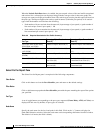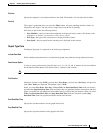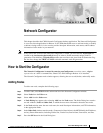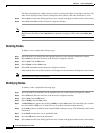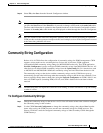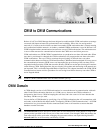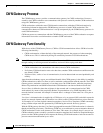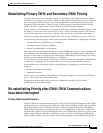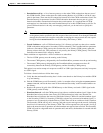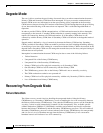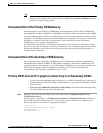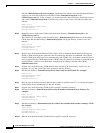
11-2
Cisco WAN Manager User’s Guide
Version 10.5, Part Number 78-12945-01 Rev. D0, August 2003
Chapter11 CWM to CWM Communications
CWMGateway Process
CWMGateway Process
The CWMGateway process provides a communications gateway for CMW workstations. Processes
owned by one CWM workstation can communicate with processes owned by another CWM workstation
using the CWMGateway process.
CWM workstations within the same CWM domain communicate with other CWM workstations by
transferring information between the CWMGateway processes of each CWM workstation. The
communication between CWM workstations is set up transparently by the CWMGateway processes in
each CWM workstation.
CWM core processes communicate with the CWMGateway process of the CWM workstation to request
information from and to send information to another CWM workstation.
CWMGateway Functionality
With the use of the CWMGateway Process, CWM to CWM communications allows CWM to have the
following functionality:
• CWM can determine, without the help of the managed network, the presence of other managing
CWM servers. This is achieved by having IP connectivity between all CWM workstations.
Note Loss of IP connectivity means that the Primary and Secondary CWMs are not able to communicate
through sending or receiving network information, and are not able to ping each other.
• CWM workstations can communicate with other (remote) CWM workstations.
• If a Primary CWM workstation were to be shut down, another CWM workstation would become the
new Primary CWM.
• If failure occurs, such as a loss of communication, it can be detected and recovered predictably and
reliably.
Apart from the redundancy aspect, one additional benefit of the CWM gateway is the ability for multiple
CWM workstations to share User Data, as well as maintain synchronization with the network. The CWM
Gateway process maintains consistency of user data across the CWM domain, while the proprietary
Robust Trap mechanism and SNMP maintain the CWM database consistent with the network data.
Network Data is defined as data that originates in the network and is communicated to the CWM
workstation(s) by means of the proprietary Robust Trap mechanism or by SNMP, depending on the
network element concerned. An example of network data is a change in alarm status for a user port or
access line.
User Data is information that is supplied by a CWM user, or by an external OSS, and which cannot be
stored in a network element and was therefore not visible to other CWM workstations prior to Release
10. Examples of User Data include connection templates, Service Class Templates, SNMP community
strings, and the unique node IDs generated by CWM during the network discovery process.
With the CWM gateway function, User Data is propagated between the CWM workstations in a domain,
thereby maintaining consistency. The Primary CWM acts as an arbitrator to prevent contention between
CWM workstations for the same element of User Data. This means, for example, that if a user on one
CWM workstation wants to modify a particular connection template, the Connection Template Manager
process on that CWM workstation must request the Primary CWM workstation to lock that resource to
prevent concurrent modification by two users.



